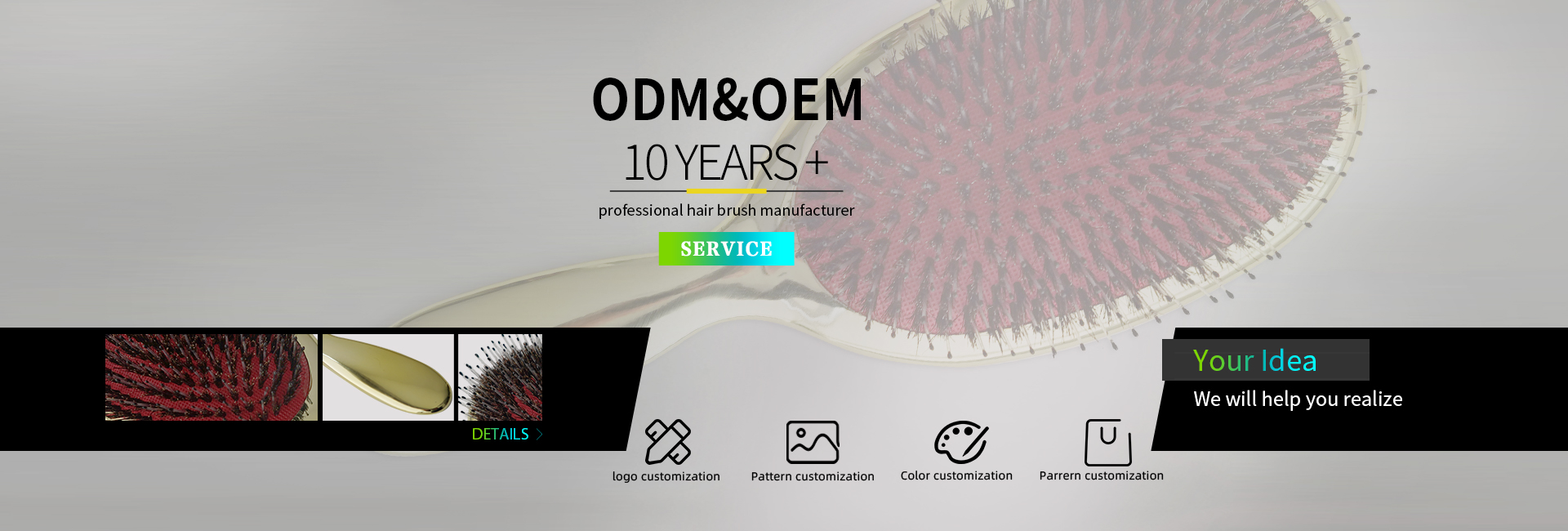Introduction
Choosing the right hair brush bristle type can make a big difference in your hair care routine. The bristles of a hair brush affect how well it detangles, smooths, and styles your hair while keeping it healthy. With so many hair brush bristle types available, understanding their differences helps you find the best hair brush for your unique needs. This guide explores the main bristle hair brush types, their benefits, and tips for choosing one based on your hair type and styling goals.
Why Hair Brush Bristle Types Matter
The hair brush bristle type you choose impacts your hair’s health and styling results. Here’s why:
- Matches Your Hair Type: Whether you have straight, curly, fine, or thick hair, different bristle hair brushes cater to specific needs to prevent damage and enhance shine.
- Improves Hair Care: The right bristles reduce tangles, distribute natural scalp oils, and promote scalp health.
- Enhances Styling and Comfort: From daily detangling to professional blowouts, hair brush bristle types determine how smoothly your brush glides and how polished your hairstyle looks.
Common Hair Brush Bristle Types and Their Features
1. Natural Bristles

- Material: Typically made from boar hair or other animal hair.
- Features:
- Gentle and soft, ideal for fine hair or sensitive scalps.
- Distributes scalp’s natural oils, boosting hair shine and smoothness.
- Reduces static, perfect for dry or tangle-prone hair.
- Best For: Daily grooming, smoothing hair for a sleek look.
- Limitations: Not suitable for wet hair; requires careful cleaning to remove buildup.
2. Nylon Bristles

- Material: Synthetic nylon fibers, adjustable for softness or firmness.
- Features:
- Durable and strong, great for thick hair or curly hair.
- Excels at detangling wet hair, perfect for blow-drying.
- Often includes rounded tips to protect the scalp.
- Best For: Quick detangling, pre-styling prep, or blowout styling.
- Limitations: May cause static; opt for anti-static models for best results.
3. Mixed Bristles

- Material: A blend of natural (boar) and nylon bristles.
- Features:
- Combines the smoothing benefits of natural bristles with the detangling power of nylon.
- Versatile for various hair types, balancing care and functionality.
- Best For: Multi-purpose use, from daily brushing to professional styling.
- Limitations: Slightly pricier due to the dual-bristle design.
4. Metal Bristles

- Material: Stainless steel or other metals.
- Features:
- Heat-resistant, ideal for use with blow dryers or hot styling tools.
- Strong detangling power, suited for very thick hair or hard-to-manage textures.
- Best For: Salon styling or specialized hair designs.
- Limitations: Can be harsh on the scalp; not recommended for sensitive scalps or daily use.
5. Silicone/Plastic Bristles
- Material: Flexible silicone or high-strength plastic.
- Features:
- Waterproof and mold-resistant, perfect for wet hair after washing.
- Soft and comfortable, great for children’s hair or sensitive scalps.
- Best For: Shower use, scalp massage, or gentle detangling.
- Limitations: Limited styling capabilities for complex looks.
6. Wooden Bristles

- Material: Natural wood (e.g., bamboo or hardwood), shaped into smooth pins.
- Features:
- Eco-friendly, appealing to those seeking sustainable hair brush bristle types.
- Gentle and non-irritating, ideal for sensitive scalps or medium-length hair.
- Reduces static and promotes scalp circulation through gentle massage.
- Best For: Daily care, scalp massage, or eco-conscious users.
- Limitations: Not heat-resistant, unsuitable for wet hair, requires maintenance to prevent cracking.
How to Choose the Right Hair Brush Bristle Type
Selecting the best hair brush depends on your hair type, styling needs, and lifestyle. Here’s how to decide:
- Know Your Hair Type:
- Fine or Sensitive Hair: Choose natural or wooden bristles for gentle care and shine.
- Curly or Thick Hair: Opt for nylon or mixed bristles for effective detangling.
- Very Thick or Unruly Hair: Metal bristles work for tough textures but use sparingly.
- Wet Hair or Kids: Silicone/plastic bristles are safe and gentle.
- Consider Your Routine: Use natural or wooden bristles for daily care, nylon or metal for styling, and silicone for shower use.
- Bristle Design:
- Dense bristles smooth long hair; sparse bristles tackle knots.
- Long bristles suit long hair; short bristles are great for short hair or scalp massage.
- Budget Options: High-end brands like Mason Pearson offer premium quality, while affordable options like Tangle Teezer prioritize practicality.
- Maintenance Tips:
- Clean natural bristles regularly to remove oils and hair.
- Keep wooden bristles dry to avoid damage.
- Silicone/plastic bristles are low-maintenance and easy to clean.
Real-World Examples of Bristle Hair Brushes
- Premium Pick: Mason Pearson Boar Bristle Brush – Perfect for fine hair, delivering glossy, smooth results with natural bristles.
- Everyday Favorite: Tangle Teezer Detangling Brush – Plastic bristles make it a go-to for quick, tangle-free brushing.
- Eco-Friendly Option: Bamboo Wooden Bristle Brush – Ideal for sustainable hair care, offering gentle detangling and scalp massage.
Conclusion
Choosing the right hair brush bristle type can elevate your hair care and styling experience. Whether you need a hair brush for fine hair, curly hair, or eco-friendly preferences, understanding bristle types helps you make the best choice. Pick a bristle hair brush that matches your hair type and routine to achieve healthier, shinier hair and effortless styling.
